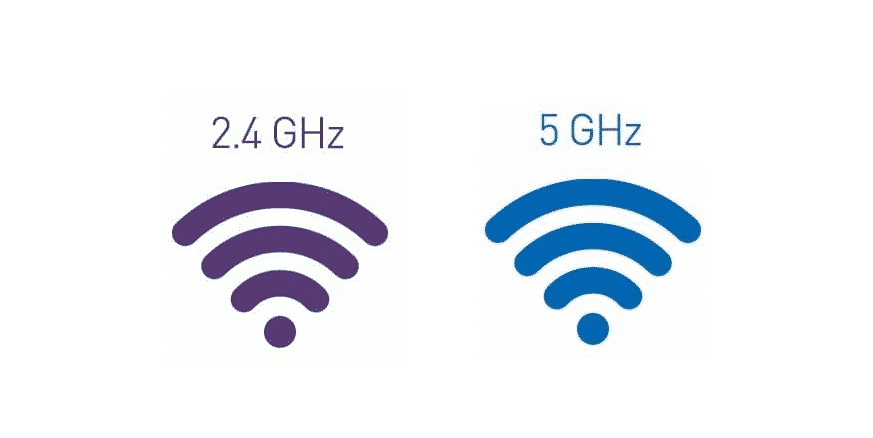These numbers refer to two different radio wavelengths (also known as “bands” or “frequencies”) that most routers use to transmit Wi-Fi connections. The two primary distinctions between these disruptive internet technologies, 2.4 GHz and 5 GHz Wi-Fi connections, are speed and range.
A frequency band is now used to transmit wireless data between devices. These bands are radio waves that carry data and are either 2.4 GHz or 5 GHz in frequency. Many Wi-Fi routers will only transmit one of these bands, which is the 2.4 band, because it is the most common frequency, and these are known as single-band routers. However, many newer Wi-Fi routers will transmit in both the 2.4 and 5 GHz bands, and these are referred to as dual-band Wi-Fi routers.
What Is the 5GHz Frequency Band Used For?
Because so many other devices use the 2.4 band, the signal became overcrowded, causing a lot of interference with Wi-Fi signals. When this happens, the Wi-Fi network speed slows down and you may lose connection to the Wi-Fi router. This is why the 5 GHz band was introduced. Because the 5 GHz band is newer, it is not as widely used as the 2.4 GHz band. It is used by fewer devices, and because it is used by fewer devices, the 5 GHz band is less congested. As a result, there is no or very little interference. Using 5 GHz would alleviate the problem of slow network speeds and connection drops caused by interference from other devices. The difference in wireless channels is another reason why the 2.4 is more susceptible to interference.
Differences between 2.4GHz and 5GHz Frequency Band
A variety of factors will determine which frequency band the devices should use. Here are some things to think about when deciding on a band frequency.
· The 2.4 GHz band has 11 channels to choose from. But of these 11 channels, only 3 are non-overlapping. So basically you have 3 solid channels to choose from. But the 5 GHz has more channels. It has 25 non-overlapping channels.
· A wireless transmission at 2.4 GHz covers a larger area but sacrifices fast internet speed, whereas 5 GHz covers a smaller area but provides faster speeds. Every router is designed to deliver a specific set of frequencies, and it is important to consider which Wi-Fi band and channel will best suit the user’s needs and provide the best performance.
· The newer 5GHz band has the potential to cut through network clutter, disturbance, and interference to maximize network performance. It has more communication channels, and as a newcomer to the market, it usually does not have many competing devices on the band.
You can read about how to boost your Wi-Fi signal here.
Which frequency, 2.4 GHz or 5 GHz, should be used?
· Count of Interference: Because of the large number of devices that use this frequency band, such as older routers, microwaves, Bluetooth devices, baby monitors, garage door openers, and more decade-old equipment, the 2.4GHz band is highly susceptible to interference.
· Home Size: The size of your home will necessitate a larger coverage area, and the 2.4GHz band is best suited for this due to its longer range and penetration ability. 5GHz will not only provide faster speeds for smaller homes, flats, or apartments, but will also help with minimal interference from cluttering networks.
· The Usage of the frequency band and the devices connected to it: The 2.4GHz band employs longer transmission waves, making it ideal for transmission through walls and other solid objects. The 2.4GHz band should ideally be used to connect devices for low bandwidth activities such as Internet browsing. 5GHz, on the other hand, is the best option for high-bandwidth devices or activities such as gaming and HDTV streaming.
Conclusion
They each have their benefits and drawbacks. The advantage of 2.4 GHz is that it has a greater range and can penetrate solid objects more effectively. However, it has the disadvantage of being more susceptible to interference. This is due to the fact that so many other devices use the same band, and it is also slower than 5 GHz.

